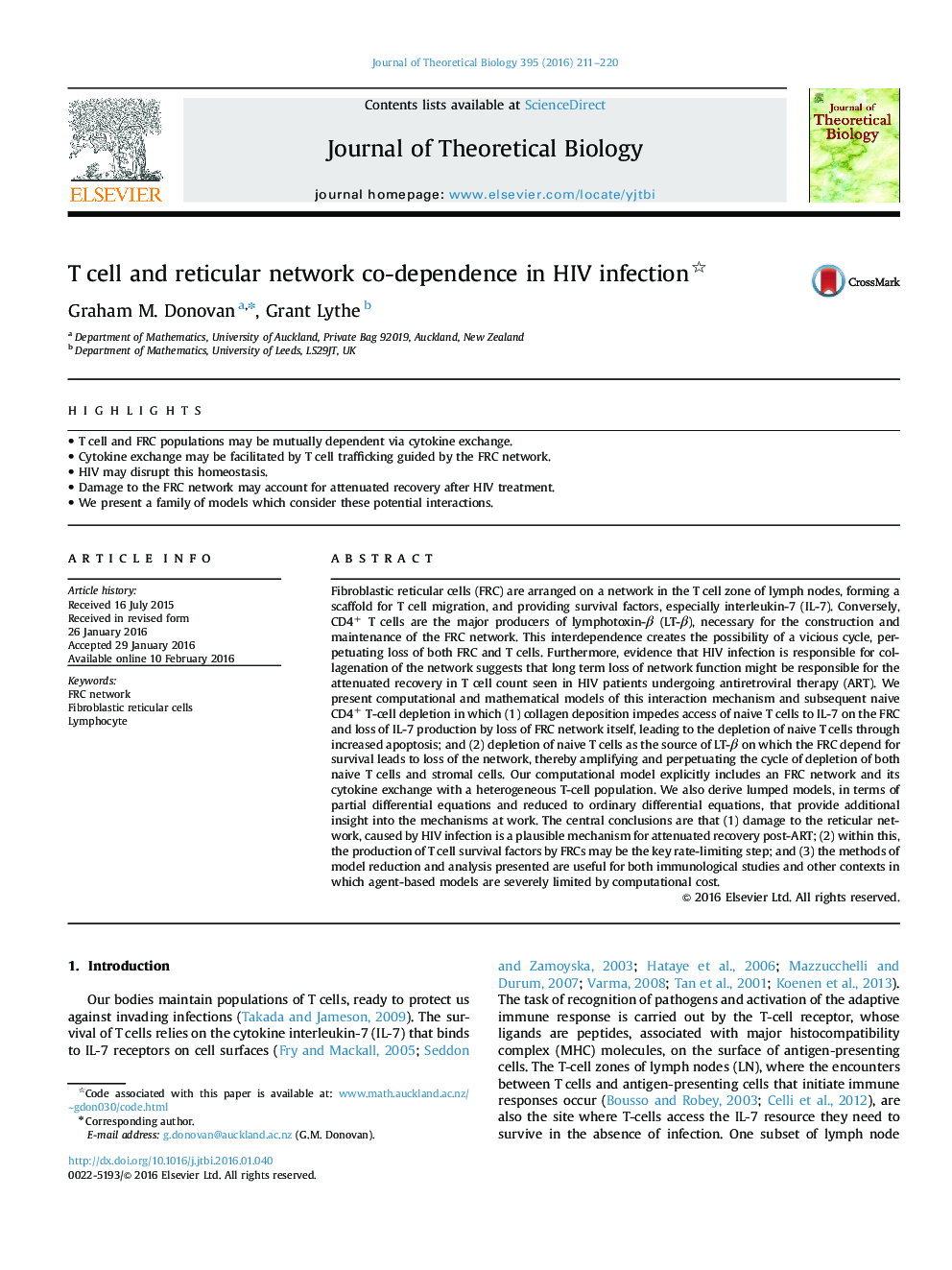| کد مقاله | کد نشریه | سال انتشار | مقاله انگلیسی | نسخه تمام متن |
|---|---|---|---|---|
| 4495850 | 1623815 | 2016 | 10 صفحه PDF | دانلود رایگان |

• T cell and FRC populations may be mutually dependent via cytokine exchange.
• Cytokine exchange may be facilitated by T cell trafficking guided by the FRC network.
• HIV may disrupt this homeostasis.
• Damage to the FRC network may account for attenuated recovery after HIV treatment.
• We present a family of models which consider these potential interactions.
Fibroblastic reticular cells (FRC) are arranged on a network in the T cell zone of lymph nodes, forming a scaffold for T cell migration, and providing survival factors, especially interleukin-7 (IL-7). Conversely, CD4+ T cells are the major producers of lymphotoxin-β (LT-β), necessary for the construction and maintenance of the FRC network. This interdependence creates the possibility of a vicious cycle, perpetuating loss of both FRC and T cells. Furthermore, evidence that HIV infection is responsible for collagenation of the network suggests that long term loss of network function might be responsible for the attenuated recovery in T cell count seen in HIV patients undergoing antiretroviral therapy (ART). We present computational and mathematical models of this interaction mechanism and subsequent naive CD4+ T-cell depletion in which (1) collagen deposition impedes access of naive T cells to IL-7 on the FRC and loss of IL-7 production by loss of FRC network itself, leading to the depletion of naive T cells through increased apoptosis; and (2) depletion of naive T cells as the source of LT-β on which the FRC depend for survival leads to loss of the network, thereby amplifying and perpetuating the cycle of depletion of both naive T cells and stromal cells. Our computational model explicitly includes an FRC network and its cytokine exchange with a heterogeneous T-cell population. We also derive lumped models, in terms of partial differential equations and reduced to ordinary differential equations, that provide additional insight into the mechanisms at work. The central conclusions are that (1) damage to the reticular network, caused by HIV infection is a plausible mechanism for attenuated recovery post-ART; (2) within this, the production of T cell survival factors by FRCs may be the key rate-limiting step; and (3) the methods of model reduction and analysis presented are useful for both immunological studies and other contexts in which agent-based models are severely limited by computational cost.
Journal: Journal of Theoretical Biology - Volume 395, 21 April 2016, Pages 211–220